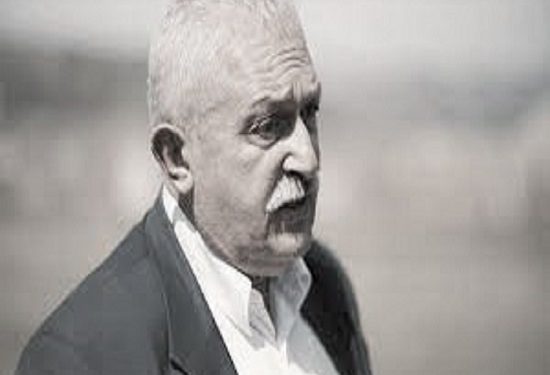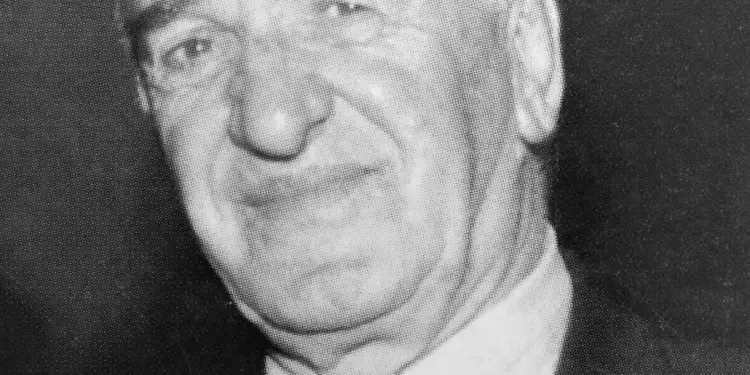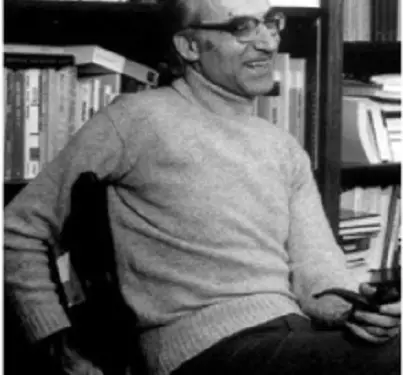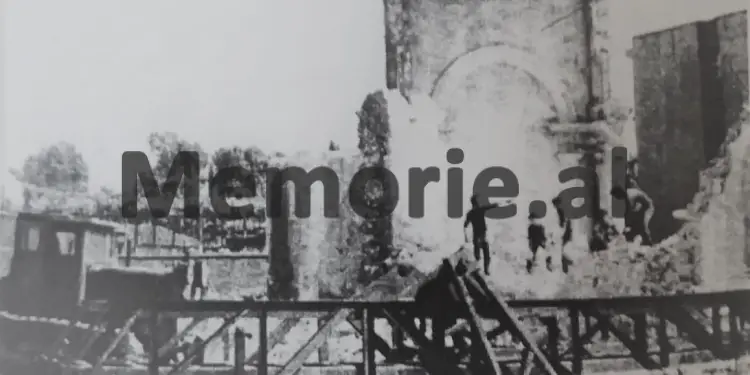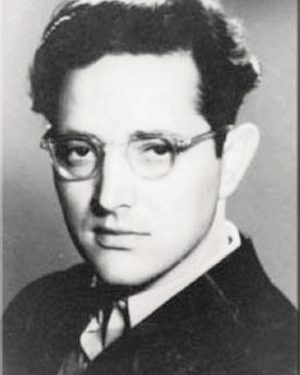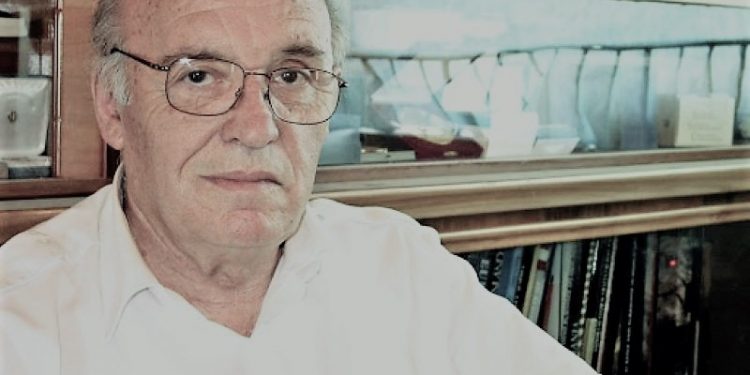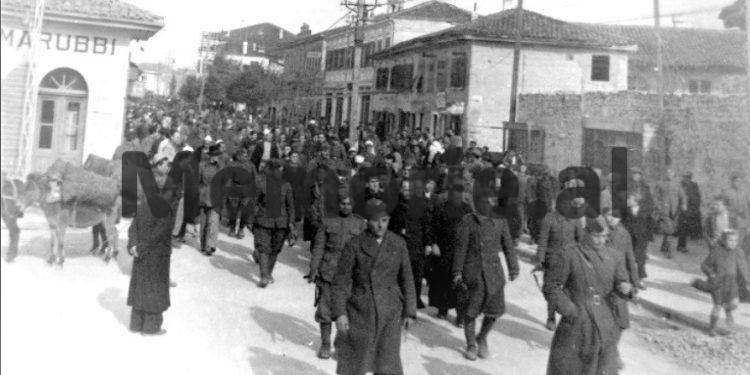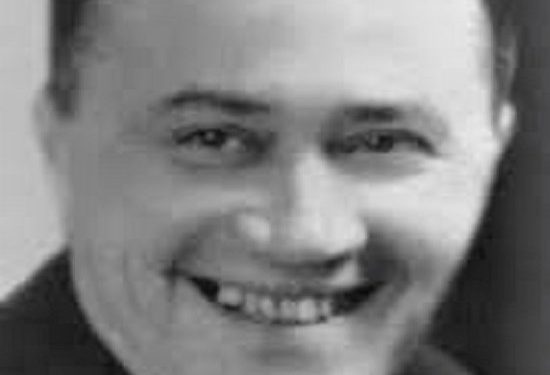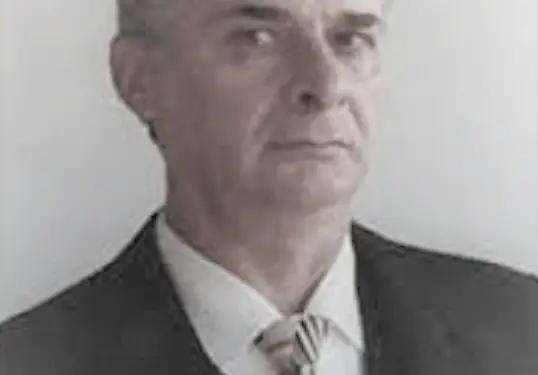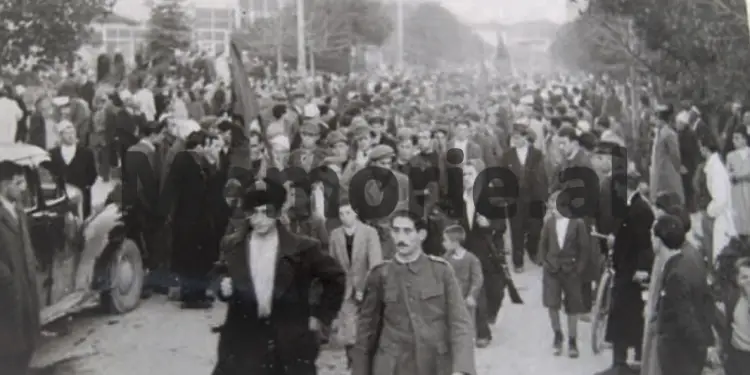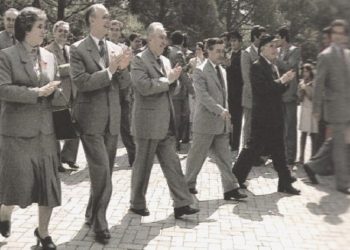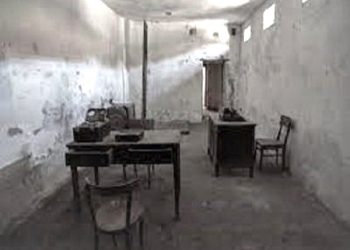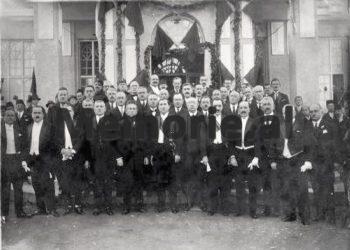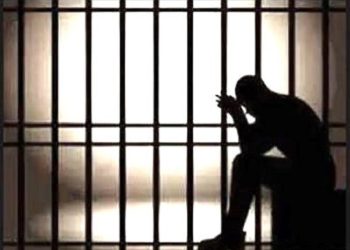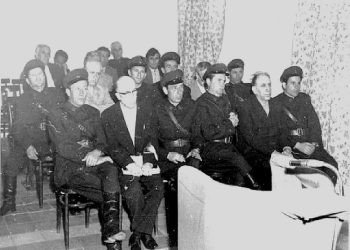By Marcel Hila
Second part
“SHKODRA IN THE YEARS OF THE ESTABLISHMENT OF THE COMMUNIST DICTATORSHIP, 1945-1953”
Memorie.al / From the beginning of this article, I wanted to emphasize that we have to take for granted the fact that: those who came to Shkodër on November 29, 1944, were military troops who were behind the invading armies, to drive them out of this country. As the liberation is accomplished, the military force, as soon as it completes its mission, as is usually the case everywhere, must be demobilized and its men sent to their homes. But this did not happen to us!
Continues from last issue
Documentary literature is not enough to present this great phenomenon of resistance and goodness in statistical form and through numbers. Literature, cinematography, film should come to our aid here. Before we move on to the organs of torture, I’m stopping at the preliminary stage: that of taking houses to become investigation cells! All these were taken by force! With just a word of mouth, the apartment was seized without any notarial or legal act and became a place of terrible torture. People were kicked out without any explanation and urgently! The researcher Kastriot Dervishi talks about these houses that were taken and became investigative dungeons…! Researcher Fritz Rodovani says that in 1945-1946, there were 26 such investigators in Shkodër, that’s how big the number of arrestees was.
Your mind tells you that there was no one left outside. I know two, not mentioned by anyone: one at the “Adriatik” hotel, in “Parruca” and the other, in a hall in front of today’s ambulance.
In the latter case, Myfit Bushati was convicted, on the charge of sheltering his old uncle, Sulçe Begun, who had asked him for help, and for this crime, Myfit was given 30 years in prison! While at the “Adriatik” hotel, Valentin Pervizi is convicted, accused of being a collaborator of the invaders, but in reality he is the son of General Preng Pervizi, even though he stayed in Italy as a student throughout the war. Mr. Valentin himself told me this in 1989.
And which halls were used as places of trial? Rozafati cinema, but also other halls and military court buildings. In the village of Xhaj i Dukagjin, the bishop’s house becomes the investigator for the mountains! How many mountaineers were massacred in those rooms! But, even in these cases, do statistics alone explain them sufficiently? Is the cold documentary fact, which is understood to be missing, because little has been written, sufficient, although necessary, for the needs of the study? No, the document would not be enough to explain all the pain of eviction and seizure of furniture and turning the beloved home into a hell of torture for others!
It cannot be reflected by numbers! Even in this case, this is where art should come to our aid! Art owes a great deal to the pain of these people. What about those who escaped? What bravery to the point of self-sacrifice is there in their departure, with the consequence of separation from their relatives! How many were the escapees? A lot! The first clandestine immigration that impoverished the city and the area from many young people! What a scene of pain there is in the story of Kolec Pikolin, when he parted with his mother, certain that he will never see her again.
Even my old uncle, in Canada, years ago, told me the scene of how he had parted with his mother, my grandmother, fully convinced that he would never see her again, and how he had stood on her shoulder weeping for more than half an hour, clearly that was the last meeting! How many are these? Just compiling the list of fugitives gives you fear.
I cannot stay without mentioning the escape of Martin Cama and Lin Delija, in 1948, from Qafa e Bosh in Thethit, two later famous artists, but also the escape of Arshi Pipa and Sami Rrepishti, after their imprisonment, the escape of extraordinary story of Kolec Pikolin who, after escaping from the Tirana prison, wandered for 32 days through the mountains and hills, fields and fields, walking at night and sleeping during the day, without bread or water. Accompanied all the time by dreams and warning visions.
A special mystique, unknown until now, which completely characterizes his book – The escape of Nihat Bakalli, a youth militant of the National Front, who want to arrest him. Run away from the northern mountains! And those who were killed at the border, trying to cross it! The murder of Mark Caca, Bardhosh Dan and Ibrahim Dërgut! A trio of wonderful young men, and so many other friends who followed them. How many were torn apart by bullets? If a list is made, how big it turns out!
What about the betrayals of the Yugoslavs, who returned the fugitives! Dom Marin Shkurtin, as soon as he is returned, is shot, but Leopold Shkreli and many, many others! What an endless suffering, unparalleled in the world. What a bitter taste this deception has left. What about the deceptive scenes they created with the border posts, which brought Tito’s photo and gave the fugitives the idea that he was already in Yugoslavia. They were emptied, in the presence of supposedly Yugoslav authorities, but who were actually Albanians. The statements were taken as agitation and propaganda, while the escape as an attempt and were punished up to twenty years in prison.
Such cases are really many! What about the pain of deportations for those families whose sons and brothers had fled! how many are And when you think that so many valuable people and families are separated from the body of this community, the most valuable ones are taken away for a life of poverty, whose houses, for punishment, after being taken to exile, in Tepelena or Porto-Palermo, in Berat or Gjirokastër, the Security takes them and brings there a policeman from the far south!
Therefore, at this point I propose the opening of studies and surveys. The survey would specify how many goods, how much gold, how many years of imprisonment, how many exiles, and how much suffering they suffered! But also which houses became the investigator, and then, let’s collect memories from those who removed. This would be of great help to the researchers, who would determine the places, their number, the carrying capacity, but also the countless difficulties that were created for the families who left their homes and were evicted without knowing where. I know two of them. Marjan Shestani, shortly before she died, told me that, since they had the house near the Department of Internal Affairs, one day, shortly after the Franciscan Lower Seminary was taken over and adapted as the headquarters of the Security, three officers became her, they gave her ordered the father to leave the house for a quarter of an hour, because they needed him, because he had shot near Dega.
With our mouths closed, with a bag of clothes in hand, we ran away to an uncle of ours, who thankfully accepted us, because we could have stayed on the main road. While the other testimony is that of Mr. Eduard Çurcia, who told me how the partisan forces came to the house one day in December 1944 and with a verbal order, told us that we urgently need to leave the apartment, because it was for the needs of the new government. We had to leave. Straight to the main road! The investigation of the house of Çurcia, the People’s Protection Section of the Military District of Shkodra was carried out.
In the yard of the house there were also working tools, one of which was the saw that was used to cut wood, but Vaskë Koleci and Jonuz Mersini, there is a good chance that they used it to chop the legs and arms of Dom Lazër Shantoja. .
What about the extraordinary Taxes that completely crushed the economic life of the city and the merchants? And for not paying them you could end up killed? What about the destruction of libraries, books, valuable documents, archives? Father Zef Pllumi, talks about the destruction of the Library of the Friars that, after it was taken, after the inhumane tortures that were done on Father Pal Doda, it is not known where it ended up.
Where did those documents go? Where are? All those testimonies with exceptional historical value were lost. Yes, the Jesuit Library, that day after day, the workers tasked with eliminating it, threw endless books, of all kinds, archival documents, a library of about 50,000 books into the fire, all burned and made hi! It had been building slowly, over many, many years. It was among the richest libraries in the Balkans.
And now, about the various tortures in the investigator?
Those who describe that Zef Plumbi in his book! That of Dom Anton Muzaj, Fra Gjon Pantalia, Myzafer Pippa, Paulin Pal, and many others! What about the torture they did to a young boy, Ahmet Bushati, only eighteen years old, who endured a monstrous investigator for seventeen months! And how many others, which I cannot list, because they are countless? Is it possible to conduct a study on these types of torture? This land had never seen such things! What about the false witnesses, about the spies who took you by the neck, how many of these things can be talked about! What about the investigators and maskers, who had turned from patriotic liberators into heartless criminals?
Is there a list of all those characters who are found together with such horrendous tasks as: Nesti Kopali, Zoi Themeli, Zoi Shkurti, a Karrabec, a jahil from the villages of Saranda, that Ahmet Bushati mentions in his book, yes Dul Rrjolli, Fadil Kapisizi, Xhemal Selimi, Shefqet Peçi, Ndreko Rino, Česk Shoshi, and others, and others, all called for the destruction of so many innocent human lives! But the selected prosecutors who did not rely on the laws at all, such as: Josif Pashko and Arani Çela, Isuf Mersini and Vaskë Koleci, Siri Çarçani and friends, who sought death sentences and succeeded in getting them from the trial body of the military court of Mustafa Iliazi and Esat Ndreu. What kind of human scum is this, who, without any conscience, has gone to work to destroy the healthiest human marrow of this country, under the pretense of building the new world?
I would like to bring a single case. What a monster’s eyes Shefqet Peçi had, former commander of the troops of the military district of Shkodra. When he received, by radiogram, an order from the director of the People’s Protection Directorate, Koçi Xoxe and his superior Enver Hoxha, to carry out an assessment and derive an approximate figure of how many candidates for imprisonment and shooting there were in the city area of Shkodra, and to do this as soon as possible, Shefqeti, with the mind of a monster and with a criminal eye, helped by his tools, came to the conclusion that about four thousand people were candidates for shooting, while about fourteen thousand were candidates for imprisonment.
The news was sent by radiogram to Tirana. The answer came. I would be very curious to hear any intuition from the readers of this article as to what was the response of those big bosses who read this data? For the prisoners, they were not told that you declared a very high number, but that at the moment we have no places to put them in the dungeons, there is no cover and food for them, and therefore we must stop arresting and imprisoning them for a second time; while for shootings, we will take them into account. We will execute the lists of candidates for the grave one by one, little by little. And in fact, many of the disasters that Shefqet Peçi had listed took the path of prisons or bullets, during the long years of the dictatorship.
Can the types of torture be left unmentioned?
Throwing the massacred in cellars, in hiding places, in mangers, leaving them without bread or water, tied up in dungeons, dismembered, mutilated, with Dom Lazër Shantoja’s legs torn off with an ax, the macabre beating of eighty-year-old Sulçe beg Bushati, that just as Beqir Ajazi has testified in his book, when they were brought to the prison of Tirana, and since they had put them in a blanket together with Dom Lazri, their wounds were united and they were attached. “When we separated them, they both let out such a painful moan that,” says Ajazi, “I will not forget it until I die”!
And the clergy of both faiths, how were they treated? This land had never seen such horrors. The Catholic clergy experienced a special Calvary, which had never happened before, so much so that it pushed even Pope John Paul II, who, on the occasion of his visit to Albania, in Shkodër, on April 25, 1993, said that: what what happened to the Catholic Church in Albania has never been seen or heard in history. There are sixty-seven innocent people shot, twenty-two dead in torture, all people of knowledge, culture and faith.
But I don’t want to take revenge on the repentant ones either. There were those who, when they saw who our liberators were, the heroes of the new world handed in the tesserae, because they did not approve of these criminal methods. But there is more. I am mentioning a partisan! Ahmet Bushati says it in his book. She ran away from the communists and fought bravely against them. He understood that they had betrayed the ideals of freedom and justice, that they became beast criminals, just for their power. Died in battle with the Pursuit Forces. Her heroism is incredible. Her unparalleled bravery. A symbolic figure. It should not be forgotten in any way.
History must find his name and portrait. Art forces the figure! Sami Repishti, in his book “In the shadow of Rozafa”, talks about a security officer, who pretended to interrogate him, but in reality, his conscience had been killing him for a long time about what was happening and why he was being used. , wanted convincing arguments for his repentance. He was suffering from being on the wrong side, and before he made a rash move, he wanted answers. He asked Sami to convincingly and clearly explain his views, those of the “enemies of the people”. This man should not be forgotten. Mr. Sami Rrepishti is still alive and can enlighten us.
Let’s not forget Pjerin Kčira and his group. He was sentenced to death by firing squad for a strong statement, the fruit of deep conscience killing. He said that the friars had not brought the weapons into the Church, but the Security. Ahmet Bushati talks about a prison guard, who had compassion for him, for this young man, who was going to die without guilt. The southern policeman wept over the young victim’s misfortune. They are unique scenes, which would make any great director of the world think deeply. So we have to admit it: there were regrets, inner turmoil, suffering that someone was on the wrong side. There were, even in the bodies of violence, hearts in which there was light, which beat and suffered for the black fate of the victims, who could not do more for them, but only suffer in silence and hope that the poor will to save you. It is the meek who practice the virtue of hope and who experience compassion. They are God’s friends, even though they are unknown, not understood and do not speak. A heavenly eye knows them, knows their names. We are also very interested in them.
Aren’t there only characters of this land and of this city and have no similar? I would cite the example of the giant Russian philosopher, Nikolai Berdyaev, expelled from Communist Russia in 1922. Since they wanted to punish him, they gave him a selected, ruthless and cunning persecutor: Dzherzhinsky himself, the head of the GPU, the Soviet Security. However, the chief spy did not manage to break down the genius philosopher, and surprisingly, after several interrogation sessions, Dzherzhinski surrendered without asking anyone, he opened up and confided in him. He told him that he had a great void in his heart, that he experienced a colossal chaos: he did not know where the good was and what the bad were. Then, the good Berdiaev, clearly and simply, explained to him that: you consider us as the evil of Russia, as if we were the devil, and to eliminate us you wage war, but it is you who are using the methods of the devil, it is you that you have become his servants.
Dzerzhinsky accepted this. And then he had completely opened his heart and told him that: “I have coldness, I was once a student for an Orthodox priest, but I left it, because I was not convinced by that path. The ideals of justice of the revolution excited me, but I did not find them realized. I must kill and massacre you in the name of justice. This does not convince me. I sink into the abyss every day. I remembered that the communist revolution could bring justice, but with what we are doing and how we are behaving, it is the complete opposite. Here, this turned out to be fatal for me!”. – “Give it up, run away, get away from this”! – The philosopher had suggested. – “No, I can’t do that, because if I leave you, I’m dead, even though I experience an indescribable spiritual anxiety. I live every minute with death in my heart”! – “But why stay then”? -“I’m done! – he finished. – “As long as it lasts, as long as it lasts”! What a mystery! Berdiaev, as a reward for this enlightenment, expelled him from Russia, instead of shooting him.
But I am bringing another example, that of Rudolf Hoess, the commander of the Auschwitz camp, where an average of 1,750 people were killed every day. He, in his autobiography, written in Poland, after receiving the death sentence from the Nuremberg trial, says that: “I fell into crime for high principles. And this is the biggest disaster. Duty, the Fuhrer and the Fatherland made me a criminal!” These great principles make the most excellent victim. It is possible that this happened to some of our characters.
I propose that for these and all that my colleagues said and will say here, they should be raised as issues that need to be deepened and a commission should be formed with an organized order and start the study. Rest assured that the net of research will yield unimaginable things of interest and importance.
So, should a deep research be done, not only with what the Shkodër District Council has recommended, but also in what I said and in many other aspects that other researchers can suggest? I say yes. But how is it possible to reconstruct, preferably as well and as accurately as possible, what happened? I propose to collect all the memory books of those who have left us.
To determine those who should be studied, to enter into an important work, which no one has done? As a first thing, to secure, through the libraries, all the literature and memories, then, the various articles in the newspapers, which are many and have very interesting details, written over the years, to conduct surveys and make available those memories that family members have in their homes that have not been made known until now, as well as documents that can be found in archives. Read carefully; extract the fragments according to the definition of the fields. You can be sure that a terrible sight will emerge, a humiliating macabre, unique to the entire communist world.
We are aware that important researchers, such as Stefan Kurtua and his team, have investigated and compiled the “Black Book of Communism”. There is another important book: “The Black Book of the French Revolution”. While, for the Soviet Union, the great Solzhenitsyn, alone, set to work and created the great, colossal work, the giant fresco of the suffering of those republics, “The Gulag Archipelago”. While I am telling you: if such a study is carried out in a systematic way, about these that I presented, a great book will be published, “The Black Book of Communism in Shkodër”, with great, terrifying, unique suffering, that in terms of ferocity, ruthlessness, criminality, torture, it would surpass the book of the Russian Nobelist several times. This book would be a unique innovation, because it does not belong to a nation, but only to a city.
The raw material of the book would be more than enough to shock anyone. Solzhenitsyn’s Gulag Archipelago is a great work in every way, a fresco of seventy years of suffering of the peoples of the former Soviet Union, but it would be worthily rivaled by this book of the suffering of one area, one city. Why? Because we were the last circle of communist hell. The researcher Kastriot Dervishi told me that the most severely punished politically in the Eastern Communist countries was one in East Germany, with only nine years in prison! Hahaha, how many are the Mandelas of Albania?
Mr. Dervishi himself has taken the initiative and publishes the hit parade of classic convicts. Sami Dangëllia 43 years in prison and exile, Osman Kazazi, 40 years, some with 37 years, Petrit Velaj, with 35 years, Pjetër Arbnori with only 29 years in prison and many others, which I am not mentioning. In the end, the last circle, the one below all in terms of crimes, massacres, poverty, ignorance of the leaders, and torture, remains for us Albanians. But this circle keeps getting narrower and deeper and ends in Shkodër! It is the last circle, the lowest level of world communism. The lowest point of the level.
Therefore, let’s take this initiative and prove it with facts: Solzhenitsyn’s “Pavilion of Cancers” is not a cancerous joint in the great body of the Soviet Union, as he tries to describe it allegorically, but Shkodra would be the body where they were formed the most dangerous cancerous metastases of world communism. For this we would win the title! And in order for the fresco to be as complete as possible, I would propose that partisan women should not be missing in this view. They are part of the panorama and it is not fair to leave them out of the picture. Ahmet Bushati talks about a ragged mass of partisans, among whom, in the parade on November 29, he had also seen some women, timid and frozen, stiff, who, “when I saw them”, – he says – ” the doubt immediately came to me: could these be mothers one day?!
While Mr. Eduard Çurçia told me that when the partisans came to their house, on the first night of their entry into Shkodër, when they dispersed and nearly twenty people entered, the female partisans took the third floor, above. Our surprise was that they were all pregnant, even though they were not married. My mother was terrified and did not know where to go with her sisters, her daughters. The astonishment of her father, who was looking at them with wonder, they took as a display of fanaticism. To my father, who was looking sadly at these young bloated bellies, a Kokoroche partisan spoke with arrogance and insolence: “Uncle, you fanatical bourgeois dog! Why do you look like that? What to be surprised! We also made love in the mountains; we didn’t just go for war”!
Why am I saying this? Because it should not be forgotten that this was also a moral of the liberators! Of those who had come to build a ‘New World’. On January 26, 1945, in front of Shkodra’s town hall, eight men were shot, all innocent, and accused of being “enemies of the people”, without any court decision. To the victims who are dying and who are giving up, some young partisan girls, after taking out their revolvers from their belts, shoot them in the head and chest mercilessly and when they still don’t give up, they pick them up from the ground and throw them into their mouths to have their throats blocked, so as to hasten the end of those who are in agony. What a macabre scene!
Mergim Korça, in his testimony made public, says that on March 25, 1945, while the cortege of victims sentenced to be shot was passing through the Square to go to the place of execution at the Rrmaji Cemetery, he noticed the giant Peng among them Cali, tormented and exhausted by the long and inhuman torture suffered by the interrogator, whose beard had also grown. As he is passing, two liberators stop him to humiliate him. They put him on the ground. A female partisan entered a nearby barbershop, says Mr. Korça, and took a razor. Then, the freedom fighter began to cut the beard of the elderly man with a razor, which had his hands tied behind his back, and could not react or stand up. The hairs on his shirt were falling out, along with bits of torn flesh and blood. His entire shirt was covered in blood. Memorie.al
Next issue follows




